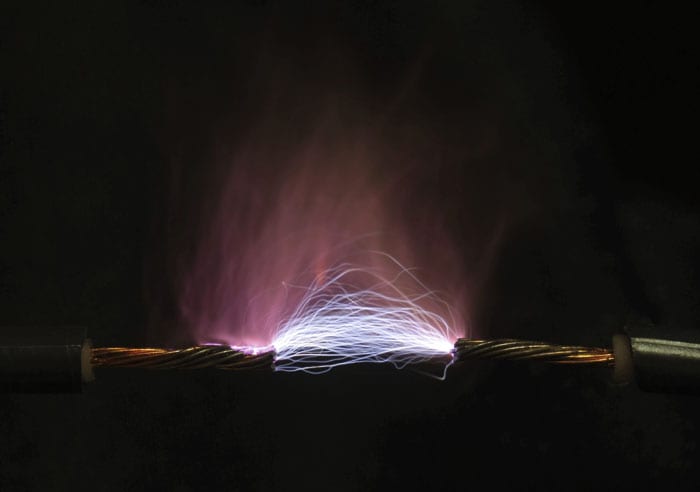Vehicle-to-grid project rolls out first installations
VIGIL, an Innovate UK funded consortium consisting of Aston University, ByteSnap Design, Grid Edge and Nortech Management, has rolled out a new control platform for vehicle-to-grid/building (V2G/V2B) systems and distribution networks.
5th March 2019 by Networks

VIGIL has announced the first installations of:
- Three V2G charge-posts in Aston University
- The VIGIL Active Network Management (ANM) equipment
- The V2G / Building Energy Management System (BEMS) controller
- OCPP EVSE controller installed next month with VIGIL mobile phone app
The VIGIL platform is a new, off-vehicle communication and control platform that supports different V2G charge-posts, manages electric vehicle (EV)/building energy dispatch and ensures distribution network limits are not exceeded.
The off-vehicle system controls how, when and the rate at which electric vehicle batteries are charged/discharged with respect to local substation constraints and EV/building energy requirements. The project is part-funded by the Office for Low Emission Vehicles (OLEV) and the Department for Business Energy and Industrial Strategy (BEIS).
The VIGIL-ANM is responsible for managing the distribution network constraints. VIGIL-ANM equipment comprises a substation monitor and the Envoy-ANM controller communicating with Nortech’s iHost platform. The iHost platform hosts the VIGIL-ANM engine that determines the substation’s available capacity based on real-time network conditions.
The V2G/BEMS controller comprises the Grid Edge monitoring and control panel. This securely connects to the building’s existing management and energy monitoring systems. The data is used by Grid Edge to optimise the dispatch of assets in the buildings and the charge/discharge strategy of the V2G units such that the grid constraints are met and building performance and service are maintained as far as possible.
Embedded electronics consultancy ByteSnap Design has developed a V2G OCPP EVSE controller which provides interoperability and control of any EV charger.
The project team at Aston University is investigating a prediction model for EV battery-life performance considering factors such as state-of-charge, state-of-health, charging-speed, depth-of-discharge, and remaining energy capacity. Power quality issues for different V2G/network scenarios is also being investigated with research findings disseminated to industry and academia. Three V2G charge-posts and harmonic meters have been installed are now fully commissioned and ready for service.
Dr Preye Ivry, network innovation engineer at Nortech, said: “One thing that all forecasts on electric vehicle growth agree on is that there will be millions of electric vehicles on UK roads by 2025. Distribution network operators are concerned about this as most of the time these electric vehicles will charge using charging infrastructures connected to the distribution network. V2G can be used as one solution to reduce the strain on the distribution network however, it comes with its own unique challenges for distribution network operators.
“The Nortech supplied ANM solution of the VIGIL platform ensures the distribution network is protected during V2G, smart charging and standard charging operations of electric vehicles. Monitoring one substation at a time to identify available capacity in real-time and providing an aggregated view of all monitored substations our VIGIL-ANM offering is the solution to integrating millions of electric vehicles to the distribution network.”
Dr Jim Scott, CPO & founder Grid Edge, added: “The electrical flexibility available from distributed energy assets is becoming increasingly important and valuable in the UK’s energy transition. To make best use of the flexibility that is available in our homes, vehicles and businesses the energy industry needs to build a level of trust between infrastructure operations and the end-users whose service may be impacted. End users need confidence their equipment will work as expected and infrastructure operators want to understand the reliability and capability of demand-side response options. Communication of demand-side activities over the meter and optimisation and forecast methods are the answer to building this trust and maximising the value realised from our existing supply infrastructure, keeping consumer costs low and allowing our power supplies to be decarbonised.”
Dr Clara Serrano, from the European Bioenergy Research Institute based at Aston University, said: “The successful installation of V2G chargers and the VIGIL platform provides the opportunity to conduct multi-scenario tests and collect practical data. The team of Aston University has conducted preliminary research work on EV battery life modelling and harmonics analysis. Using the real-world data from the monitoring systems, the team is now working on V2G impacts on battery degradation and grid harmonics to better justify the V2G technology and find solutions to mitigate its impact on both EV and the grid.”
Comments
Login on register to comment
Related content

Power
The future for vegetation management
Why networks should focus on data not trees to overcome the costly challenges involved in vegetation management

Power
An unprecedented opportunity for change
Why short interruptions will matter in RIIO-ED2 and how to address them.

Power
Time for less talk and more action on decarbonisation
Core "oven-ready" solutions to decarbonising heat and transport exist today and should be implemented without delay, says WPD's future power networks expert.
Related supplier content

Power
Load patterns and lockdown: how Covid-19 is impacting electricity networks
Insights into dynamics on the low voltage network as the outbreak unfolds

Downloads
Protect electrical equipment from insulation failure
Insulation faults are a major cause leading to the eventual failure of electrical equipment. Partial discharge (PD) is a very reliable indicator of developing insulation faults. Regular PD testing allows users to detect and analyze PD activity

Heat
How E.ON. is helping the City of London become a zero emissions city
Discover Citigen. Deep in the heart of our bustling capital